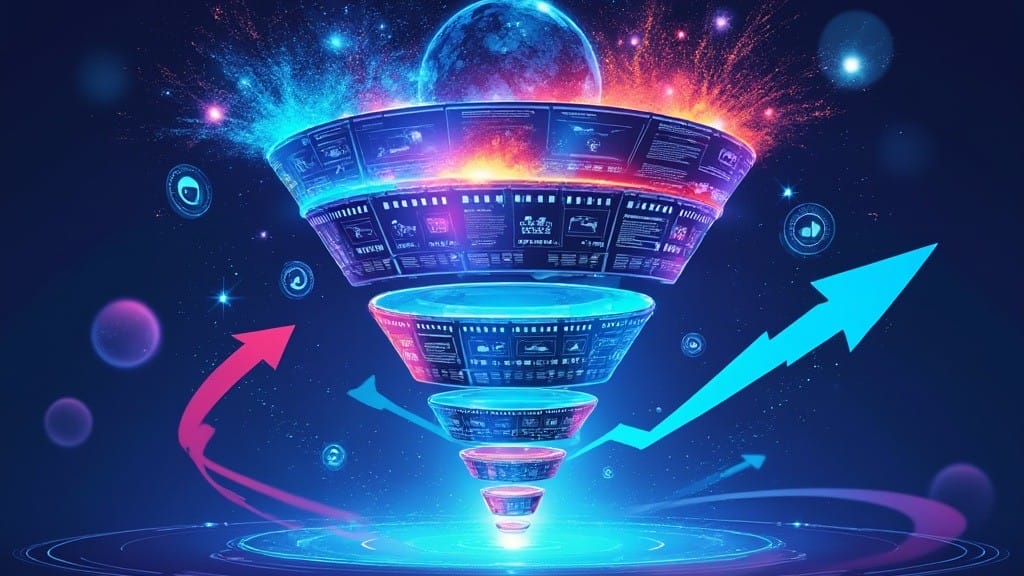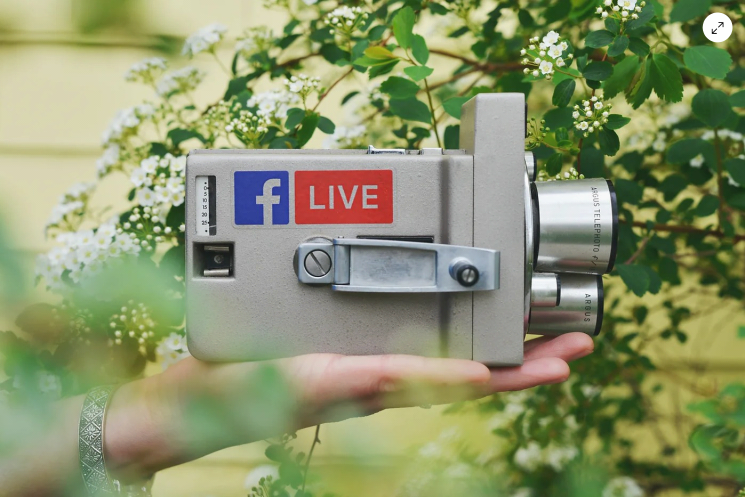In the realm of digital marketing, video has emerged as one of the most powerful tools for engaging audiences, building brand awareness, and driving conversions. However, to truly harness the potential of video content, it’s essential to understand how it fits into a comprehensive marketing funnel. The video marketing funnel is a strategic approach that guides potential customers through their journey, from the initial awareness of your brand to the final conversion and beyond. In this article, we’ll explore how to build an effective video marketing funnel that captures attention, nurtures leads, and ultimately drives conversions.
Introduction to the Video Marketing Funnel
A video marketing funnel is a structured framework that maps out the stages a customer goes through, from first learning about your brand to making a purchase decision. It’s similar to a traditional sales funnel but with a specific focus on how video content can support and enhance each stage of the customer journey. The funnel is typically divided into three main stages: awareness, consideration, and conversion. Each stage requires a different type of video content tailored to the needs and behaviours of potential customers at that particular point in their journey.
The primary goal of the video marketing funnel is to move prospects smoothly from one stage to the next, ultimately leading them to take the desired action, whether it’s making a purchase, signing up for a service, or engaging with your brand in another meaningful way. By strategically placing video content at each stage of the funnel, you can effectively guide potential customers through the decision-making process, increasing the likelihood of conversion.
Awareness Stage: Capturing Attention and Sparking Interest
The top of the funnel is all about awareness. At this stage, potential customers are just becoming aware of your brand, and your goal is to capture their attention and spark their interest. This is the stage where first impressions are made, so it’s crucial to create content that is not only engaging but also aligns with the interests and needs of your target audience.
Videos at the awareness stage should focus on educating and informing the audience rather than selling. The aim is to introduce your brand, highlight what makes you unique, and build a connection with viewers. Content such as explainer videos, brand story videos, and educational content can be particularly effective. These types of videos help establish your brand as a valuable resource and build trust with your audience from the outset.
For example, an explainer video can introduce a common problem your audience faces and then subtly present your product or service as the solution. This approach positions your brand as an expert in the field and piques the interest of viewers without coming across as overly promotional. Similarly, brand story videos that showcase your company’s mission, values, and history can create an emotional connection with viewers, making your brand more relatable and memorable.
Distribution is also key at the awareness stage. Leveraging social media platforms, YouTube, and other video-sharing sites can help amplify your reach and ensure your content is seen by as many potential customers as possible. The goal is to generate interest and encourage viewers to learn more about your brand, setting the stage for the next phase of the funnel.
Consideration Stage: Building Trust and Nurturing Leads
Once potential customers are aware of your brand, the next step is to move them into the consideration stage. At this point, they are evaluating their options and deciding whether your product or service meets their needs. The videos you create for this stage should focus on building trust and providing detailed information that helps prospects make an informed decision.
Testimonial videos are a powerful tool during the consideration stage. Hearing directly from satisfied customers about their positive experiences can be incredibly persuasive, especially for prospects who are on the fence. These videos not only build credibility but also provide social proof, showing that others have successfully used and benefited from your product or service.
Product demonstration videos are another effective format for the consideration stage. These videos showcase the features and benefits of your product in action, giving potential customers a clear understanding of how it works and what it can do for them. A well-executed demo video can address common questions or concerns, making it easier for prospects to envision how your product fits into their lives.
In-depth explainers and comparison videos can also play a significant role in this stage. Explainer videos that dive deeper into how your product solves specific problems can help clarify its value proposition. Comparison videos, on the other hand, can highlight how your product stacks up against competitors, emphasising its unique advantages.
At this stage, it’s important to continue nurturing leads with content that reinforces your brand’s credibility and value. This might include follow-up emails with video links, targeted ads on social media, or personalised video messages that address specific questions or concerns. The goal is to keep your brand top-of-mind as prospects weigh their options, ultimately guiding them toward a purchase decision.
Conversion Stage: Driving Action and Sealing the Deal
The final stage of the video marketing funnel is conversion. This is where all the effort put into building awareness and nurturing leads pays off. The videos you create for this stage should be focused on driving action and sealing the deal.
Case study videos are particularly effective at the conversion stage. These videos provide detailed accounts of how your product or service has helped real customers achieve their goals. By showcasing tangible results and successful outcomes, case studies can persuade prospects that your solution is the right choice for them. They also serve as a powerful form of social proof, reinforcing the credibility of your brand.
Tutorial videos can also play a crucial role in converting prospects into customers. By offering step-by-step guidance on how to use your product, these videos can reduce any hesitation or uncertainty that might be holding prospects back from making a purchase. Tutorials can demonstrate ease of use, highlight key features, and help prospects feel more confident in their decision.
Personalised video content can be a game-changer at this stage. Sending a personalized video message that addresses the specific needs or concerns of a prospect can make them feel valued and understood. This personal touch can be the final nudge they need to take action, whether it’s completing a purchase, signing up for a service, or scheduling a consultation.
Calls to action (CTAs) are essential in conversion-stage videos. The CTA should be clear, compelling, and easy to follow, guiding viewers toward the next step in the buying process. Whether it’s clicking a link, filling out a form, or making a purchase, the CTA should align with the specific goal of the video and the stage of the funnel.
Nurturing Post-Conversion: Building Loyalty and Encouraging Repeat Business
The video marketing funnel doesn’t end at conversion. In fact, post-conversion videos are crucial for building long-term customer relationships and encouraging repeat business. Once a customer has made a purchase, the focus shifts to nurturing that relationship and ensuring their satisfaction.
Follow-up videos are an effective way to maintain communication with customers after the sale. These videos can provide additional support, such as tips for getting the most out of the product or guidance on how to use advanced features. By continuing to offer value even after the purchase, you can increase customer satisfaction and loyalty.
Unboxing videos or personalised thank-you messages can also enhance the post-conversion experience. These videos make customers feel appreciated and can create a positive association with your brand. In addition, sending personalised video messages on special occasions, such as birthdays or anniversaries, can further strengthen the relationship and encourage repeat business.
Loyalty programs and referral incentives can be promoted through video content as well. Creating videos that explain the benefits of joining a loyalty program or the rewards of referring a friend can drive further engagement and brand advocacy. These videos not only help retain existing customers but also encourage them to become ambassadors for your brand.
Finally, customer feedback and testimonial requests can be integrated into your post-conversion video strategy. By encouraging satisfied customers to share their experiences through video testimonials, you can generate fresh content that can be used at the consideration and conversion stages for new prospects. This creates a continuous cycle of engagement and advocacy, fuelling the video marketing funnel.
Integration Across Channels: Ensuring Consistency and Maximizing Reach
To maximize the effectiveness of your video marketing funnel, it’s essential to integrate your video content across multiple channels and touchpoints. Consistency is key—your messaging, tone, and visual style should be uniform across all platforms to reinforce your brand identity and create a cohesive experience for your audience.
For example, the awareness-stage videos you share on social media should complement the consideration-stage videos featured on your website. Similarly, the conversion-stage videos included in your email marketing campaigns should align with the content presented in your product landing pages. This integrated approach ensures that potential customers receive a consistent message no matter where they encounter your brand.
Cross-promotion is also a valuable tactic. Sharing your video content across different platforms can amplify your reach and expose your brand to a broader audience. For instance, a product demo video published on YouTube can be embedded in a blog post, shared on social media, and included in a newsletter. This multi-channel distribution not only increases visibility but also provides multiple opportunities for engagement at different stages of the funnel.
Personalisation should also be considered when integrating video content across channels. By tailoring videos to specific audience segments and distributing them through the most relevant channels, you can create a more personalised experience that resonates with viewers and drives better results.
Measuring Success: Tracking and Analyzing Video Performance
To ensure that your video marketing funnel is effective, it’s crucial to track and measure the performance of your videos at each stage of the funnel. This involves analyzing key metrics such as engagement, conversion rates, and return on investment (ROI) to determine what’s working and where improvements can be made.
At the awareness stage, metrics such as views, shares, and social media engagement can provide insights into how well your content is capturing attention and generating interest. High engagement rates indicate that your videos are resonating with your audience, while low engagement may signal a need to refine your messaging or targeting.
In the consideration stage, metrics like watch time, click-through rates, and lead generation can help you gauge the effectiveness in tracking how well your content is educating and informing your audience. High watch times and click-through rates suggest that viewers are finding value in your videos, while low performance in these areas may indicate that the content needs to be more engaging or better targeted.
Conversion-stage metrics such as conversion rates, sales figures, and customer acquisition costs are critical for assessing the effectiveness of your video content in driving action. These metrics help you understand whether your videos are successful in persuading viewers to take the desired action, whether that’s making a purchase, signing up for a service, or another conversion goal. A thorough analysis of these metrics can reveal which videos are most effective at converting leads into customers and provide insights into how you can improve your content to drive even better results.
Return on investment (ROI) is another crucial metric for evaluating the success of your video marketing funnel. By comparing the costs of producing and distributing your videos to the revenue they generate, you can determine whether your video marketing efforts are delivering a positive return. A high ROI indicates that your videos are effectively contributing to your overall marketing and business goals, while a low ROI may signal that adjustments are needed to improve efficiency and effectiveness.
It’s also important to continually refine and optimize your video marketing funnel based on the insights you gain from tracking and measuring performance. This might involve experimenting with different types of video content, adjusting your messaging, or targeting new audience segments. By staying agile and responsive to data, you can ensure that your video marketing funnel remains effective and continues to drive meaningful results for your business.
Conclusion
Building a comprehensive video marketing funnel is essential for guiding potential customers through their journey from awareness to conversion and beyond. By strategically placing video content at each stage of the funnel, you can capture attention, build trust, and drive action, ultimately leading to more conversions and long-term customer relationships.
From the initial awareness stage, where videos introduce your brand and spark interest, to the consideration stage, where detailed content helps prospects evaluate their options, and finally to the conversion stage, where compelling videos encourage viewers to take action, each stage of the funnel plays a critical role in the success of your video marketing strategy. Post-conversion videos further enhance customer loyalty and encourage repeat business, ensuring that your marketing efforts continue to deliver value over time.
By integrating your video content across multiple channels, maintaining consistency in your messaging, and carefully tracking and analyzing performance metrics, you can optimize your video marketing funnel to achieve the best possible results. Whether you’re looking to increase brand awareness, generate leads, or drive sales, a well-structured video marketing funnel can help you achieve your goals and build a strong, lasting connection with your audience.





